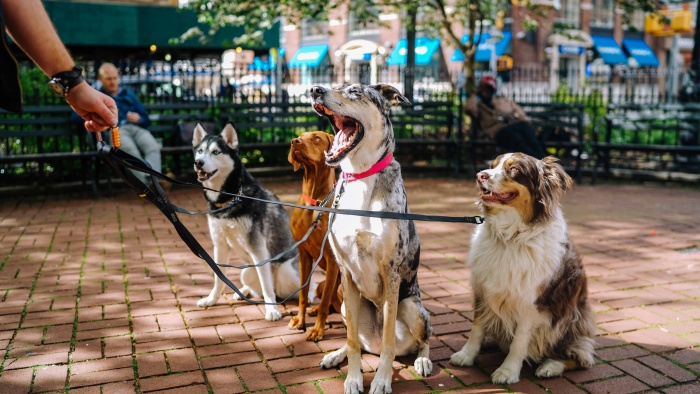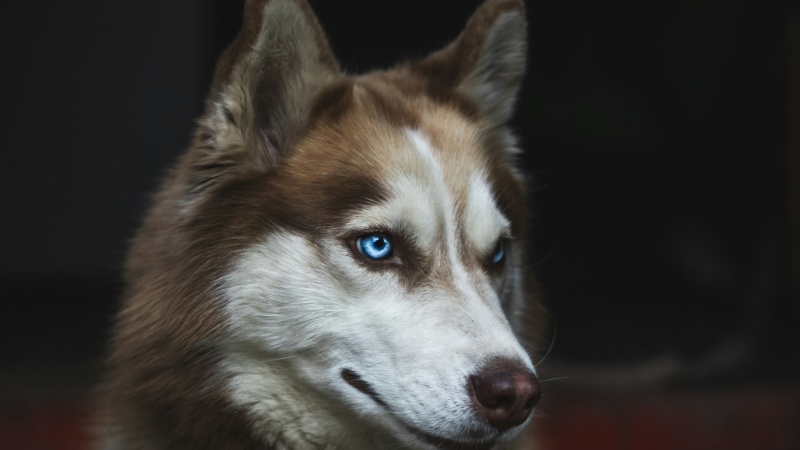
Best Doggie Doorbell:15+ Models Tested for Potty Training
Are you training your doggie doorbell manners, or does your furry friend incessantly scratch or bark at the door to go outside? You need a

Noticed your dog yawn more often than usual? While it’s adorable, it could also be a sign of something to consider if it appears excessive. The experts suggest that conducting research and inquiring when something about your dog seems unusual is always a wise approach.

In this discussion, we’ll explore the possible meanings behind your dog’s yawn, along with some typical reasons for increased yawning in dogs.
The reasons behind human yawns remain somewhat mysterious. Theories range from them being linked to empathy, a way to soothe our busy minds, or as a means to reinvigorate ourselves. Yet, these hypotheses are still under discussion. The common belief that yawning increases oxygen levels in human blood has been challenged by scientific experiments.
In canines, the mechanics of yawning don’t exactly mirror those in humans. Pinpointing why dogs yawn is as challenging as it is for human yawns. However, it’s widely regarded that yawning serves as a communicative gesture in dogs.
Yawning in dogs remains an enigmatic behavior, but several key explanations are often considered. While simple fatigue is a common reason, it’s not the sole factor to think about.
It’s important to remember that if you’re worried about your dog’s excessive yawning being a symptom of a deeper issue, consulting with your vet is the wisest course of action.
Five primary causes of frequent yawning in dogs include:
Yawning in dogs can serve as a calming technique when they’re overwhelmed by their surroundings. Common stressors for dogs include noisy environments, conflict, unfamiliar people, children, pets, or new places. While a certain level of stress is normal for dogs (and humans), chronic stress can significantly affect their well-being.

Yawning among domestic and wild dogs often signifies a desire to disengage from a particular situation. If a dog anticipates a potential conflict, a yawn can be a signal of their preference to avoid it. Similarly, in the presence of a nervous dog, yawning might be used to express a wish not to interact, potentially providing reassurance.
Interestingly, dogs are prone to ‘catch’ yawns from humans, as shown in a 2013 study. Dogs are more likely to mimic yawns from their owners than from strangers, suggesting a deep emotional connection. So, when your dog yawns after you, it might be a sign of their strong bond with you.
Just like humans, dogs need stimulation to avoid boredom. Different breeds have varying needs for activity. While some are content with minimal activity, others require significant play or work. Dogs bred for working or hunting may find it challenging to adjust to a less active lifestyle. If boredom is a concern, Dan’s Pet Care offers solutions to keep your dog engaged and healthy.
Consider trying toys(like dog doorbell, chase toy…), a training routine, socializing at dog parks, or exploring new environments to stimulate a bored dog.
Yawning in dogs can sometimes point to health issues. It could be a sign of jaw discomfort, stomach upset, or swallowing difficulties. Yawning may indicate pain, a heart condition, or a struggle to breathe properly.
If your dog exhibits unusual behavior, contacting your vet is crucial. Also, look out for other signs of discomfort, including:

Our journey into the world of ‘dog yawn‘ has not only enlightened us on why our furry friends might be yawning more than usual, but also empowered us to become attentive observers and caring guardians of their well-being.
As we close this insightful discussion, remember that each yawn tells a story, and it’s our privilege to understand and respond to these silent tales.


Are you training your doggie doorbell manners, or does your furry friend incessantly scratch or bark at the door to go outside? You need a

When it comes to dog pee, much like humans, the urine of animals is a vital health indicator. Just as human urine reveals a lot

Wondering what’s so fantastic about bell train a dog? Picture a world where your furry friend always alerts you when they need to go outside,

A potty doorbell is essentially a bell placed near your entrance that your dog can ring to indicate her need to go potty. No matter

Are you training your doggie doorbell manners, or does your furry friend incessantly scratch or bark at the door to go outside? You need a

When it comes to dog pee, much like humans, the urine of animals is a vital health indicator. Just as human urine reveals a lot

Noticed your dog yawn more often than usual? While it’s adorable, it could also be a sign of something to consider if it appears excessive.

Wondering what’s so fantastic about bell train a dog? Picture a world where your furry friend always alerts you when they need to go outside,
Copyright © 2024 doggydogdoorbell. All Rights Reserved.